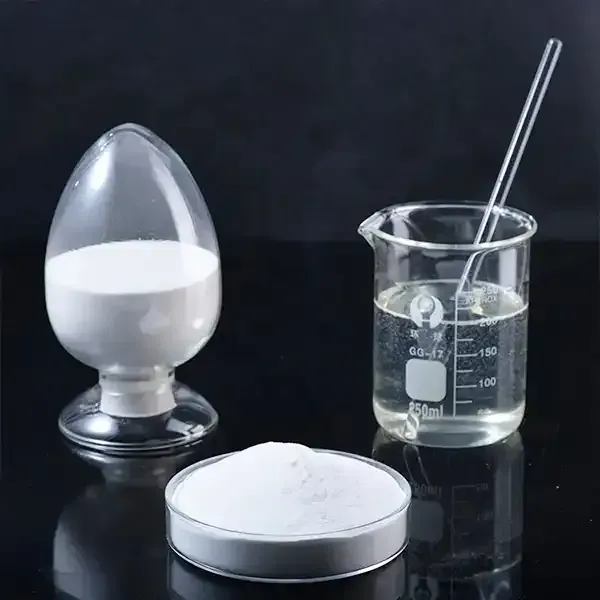Hydroxyethyl Cellulose Properties, Applications, and Future Perspectives
Hydroxyethyl cellulose (HEC) is a non-ionic, water-soluble polymer derived from cellulose, a naturally occurring polysaccharide found in the cell walls of plants. Its structure is modified through etherification, introducing hydroxyethyl groups into the cellulose backbone. This modification not only enhances the solubility of cellulose in water but also improves its functional properties, making HEC a versatile ingredient in various industrial applications.
Chemical Structure and Properties
HEC is characterized by its high molecular weight, which can range from 50,000 to over a million g/mol. The degree of substitution (DS)—the average number of hydroxyethyl groups substituted per glucose unit of the cellulose—is a critical parameter that defines the properties of HEC. A higher DS leads to greater solubility in water, while variations in viscosity can be tailored through adjustments in molecular weight and concentration. HEC solutions exhibit pseudoplastic behavior, meaning they become less viscous under shear stress, making them ideal for applications that require easy processing or application, such as paints and coatings.
Applications of Hydroxyethyl Cellulose
1. Pharmaceuticals HEC is widely used in the pharmaceutical industry as a thickening agent and stabilizer in suspensions, gels, and ointments. Its biocompatibility and ability to form cohesive gels make it suitable for controlled drug release systems, where it can help modulate the release profile of active pharmaceutical ingredients.
2. Cosmetics and Personal Care Products The cosmetic industry utilizes HEC for its thickening properties and as a binder in various products, ranging from creams and lotions to shampoos and conditioners. HEC can enhance texture, provide a smooth application, and improve the overall stability of formulations.
3. Food Industry Although not as prevalent as in pharmaceuticals and cosmetics, HEC finds application in the food sector as a food additive, particularly as a thickener and stabilizer in sauces, dressings, and bakery products. Its ability to retain moisture also contributes to improved texture and consistency in food items.
hydroxyethyl cellulose

4. Construction In the construction industry, HEC is employed as an additive in cement, mortars, and plaster. It enhances the workability and bonding properties of construction materials, allowing for better manipulation and application. Moreover, its water retention capabilities help prevent drying shrinkage and cracking in fresh concrete.
5. Paints and Coatings HEC is a crucial ingredient in the formulation of water-based paints and coatings. It provides the necessary viscosity for easy application and optimal leveling, while also improving the adherence of the paint to surfaces. Additionally, the incorporation of HEC can enhance the stability of pigmented dispersions, ensuring consistent color and performance.
Environmental Considerations
As a derivative of cellulose, HEC carries an environmental advantage due to its biodegradable nature. In an era where sustainability is paramount, HEC presents a renewable alternative to synthetic polymers that can accumulate in the environment. The sourcing of cellulose from sustainably managed forests further enhances HEC's eco-friendly appeal.
Future Perspectives
The future of hydroxyethyl cellulose looks promising, driven by ongoing research and development efforts in various fields. Innovations in polymer chemistry may lead to the creation of modified forms of HEC with enhanced functionalities, catering to niche applications. The growing demand for natural and biodegradable materials in consumer products presents a significant opportunity for HEC, particularly in packaging and eco-friendly formulations.
In conclusion, hydroxyethyl cellulose is a remarkable biodegradable polymer with diverse applications across many industries. Its unique properties make it invaluable in pharmaceuticals, cosmetics, food, construction, and coatings. As the world leans toward sustainability, HEC stands out as a solution that aligns with ecological priorities while meeting modern industrial needs. As research continues and new applications are discovered, HEC's role in promoting sustainable practices and innovative products is likely to expand, ensuring its relevance for years to come.
-
Rdp Powder: Key Considerations for Wholesalers in the Building Materials IndustryNewsJul.08,2025
-
Key Considerations for Wholesalers: Navigating the World of Hpmc - Based ProductsNewsJul.08,2025
-
Hpmc Detergent: Key Considerations for WholesalersNewsJul.08,2025
-
Key Considerations for Wholesalers: China Hpmc For Tile Adhesive, Coating Additives, Concrete Additives, and MoreNewsJul.08,2025
-
Crucial Considerations for Wholesalers: Navigating the World of Construction MaterialsNewsJul.08,2025
-
Key Considerations for Wholesalers Sourcing Additive For Cement, Additive For Concrete, Additive For Putty from Additive Manufacturer Shijiazhuang Gaocheng District Yongfeng Cellulose Co., Ltd.NewsJul.08,2025




